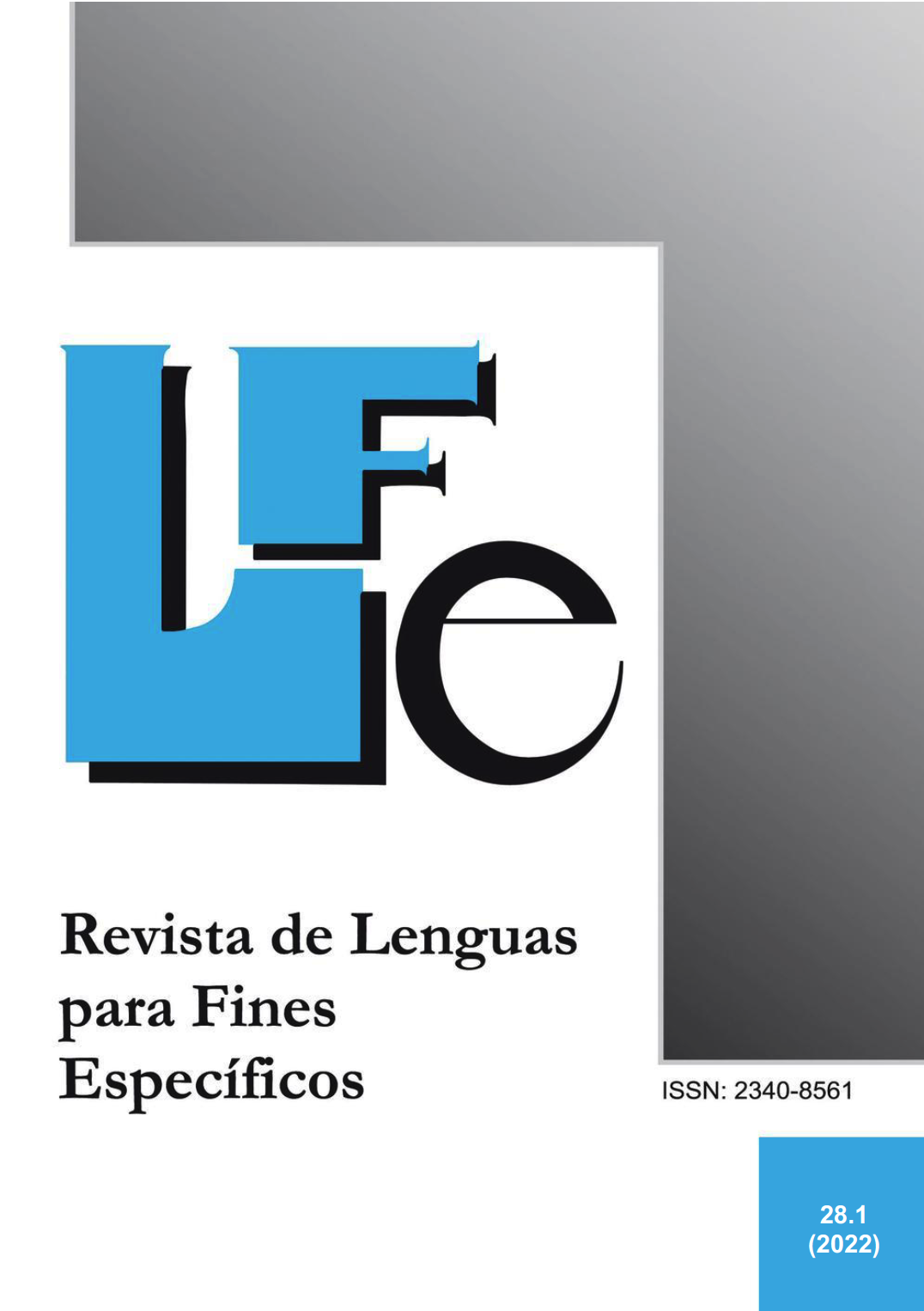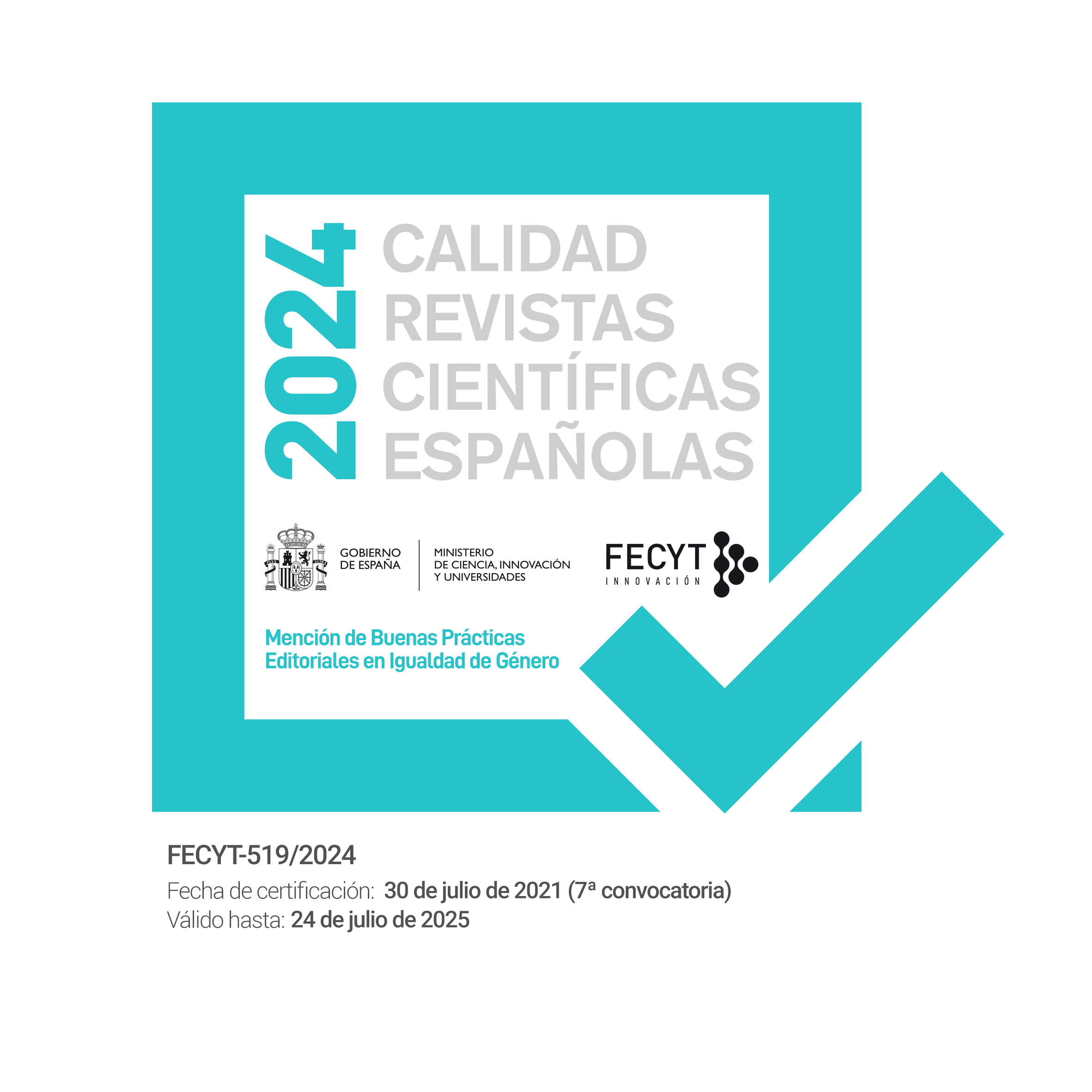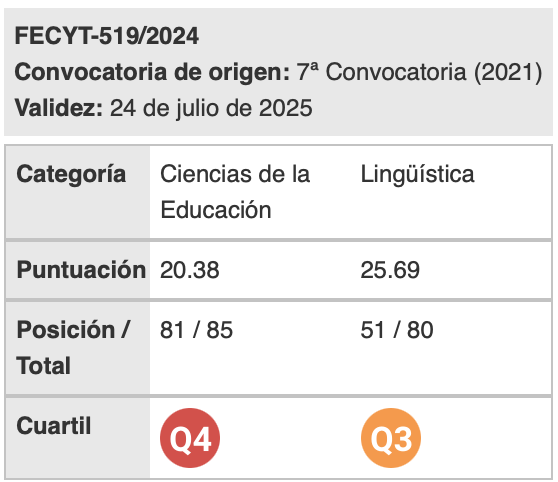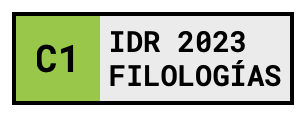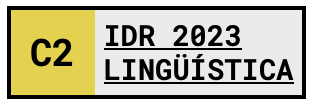English-medium instruction experiences: ‘Focus on form’ as a strategy to develop subject specific literacy
Keywords:
English as a medium instruction, focus on form, pragmatic strategies, disciplinary language, language supportAbstract
This paper examines English-medium instruction lectures at the University of Zaragoza (Spain) and problematises the extent to which English is only the ‘medium’ or the ‘lingua franca’ to obtain a teaching-learning purpose as regards content or whether these lectures are also sensitive to language learning. The analysis is concerned with metalinguistic comments made by EMI lecturers during their lessons in which they ‘focus on form’, i.e., shift from the topic they were discussing (course-related content) to English language forms (e.g., vocabulary, pronunciation, etc.). It analyses this as a pragmatic strategy among others employed by the lecturers to prevent and overcome difficulties of comprehension experienced by their students. The corpus for the study consists of 14 hours of audio-recorded lectures in two different disciplines (Business Administration and Nanoscience). The methodology relies on a discourse-pragmatic analysis of the transcribed lectures as well as on semi-structured interviews with the lecturers, which serve to understand their perception of their use of this and other pragmatic strategies. The results of the study contribute to providing evidence of the supportive attitude of EMI lecturers who focus on form to assist their students with disciplinary language but who consider themselves as non-language teachers.
Downloads
References
Airey, J. (2011). The disciplinary literacy discussion matrix: A heuristic tool for initiating collaboration in higher education. Across the disciplines, 8(3), 1-9.
Aguilar, M. & Rodríguez, R. (2012). Lecturer and student perceptions on CLIL at a Spanish university. International Journal of Bilingual Education and Bilingualism, 15(2), 183-197. doi:10.1080/13670050.2011. 615906
Álvarez-Gil, F. J. (2021). Possible implementation of subjects taught using English as a Medium of Instruction methodology in tourism studies. Language Value, 14(2), 68-86.
Arnó-Marciá, E. & Aguilar, M. (2018). ESP, EMI and interculturality: How internationalised are university curricula in catalonia? ESP Today, 6(2), 184-207. https://doi.org/10.18485/esptoday.2018.6.2.3
Basturkmen, H. & Shackleford, N. (2015). How content lecturers help students with language: An observational study of language-related episodes in interaction in first year accounting classrooms. English for Specific Purposes, 37, 87-97.
Björkman, B. (2014). An analysis of polyadic English as a lingua franca (ELF) speech: A communicative strategies framework. Journal of Pragmatics Volume, 66, 122-138.
Brinkmann, S. (2014). Unstructured and Semi-Structured Interviewing. In Leavy, P. (Ed.) The Oxford Handbook of Qualitative Research (pp. 277–299). Oxford: Oxford University Press. https://doi.org/10.1093/oxfordhb/9780199811755.013.030
British Council/TEPAV. (2015). The state of English in higher education in Turkey: A baseline study. Retrieved January 2016, from The British Council Web site: http://www.urapcenter.org/2016/he_baseline_study_book_web_-_son.pdf.
Brown, H. (2014). Contextual factors driving the growth of undergraduate English-medium instruction programmes at universities in Japan. Asian Journal of Applied Linguistics, 1, 50-63.
Brown, H., & Bradford, A. (2017). EMI, CLIL, & CBI: Differing approaches and goals. In P. Clements, A. Krause, & H. Brown (Eds.), Transformation in language education (pp. 328–334). Tokyo: JALT.
Carrió-Pastor, M. L. (2021). CLIL vs EMI: Different Approaches or the Same Dog with a Different Collar?. In Teaching Language and Content in Multicultural and Multilingual Classrooms (pp. 13-30). Palgrave Macmillan, Cham. https://doi.org/10.1007/978-3-030-56615-9-2
Cogo, A. (2009). Accommodating difference in ELF conversations: A study of pragmatic strategies. In A. Mauranen, A. and E. Ranta (Eds.), English as a Lingua Franca: Studies and Findings (pp. 254–273). Newcastle Upon Tyne: Cambridge Scholars Publishing.
Costa, F. (2012). Focus on form in ICLHE lectures in Italy. In U. Smit, & E. Dafouz (Eds.). Integrating content and language in higher education: Gaining insights into English-medium instruction at European universities (pp. 30–47). AILA Review: 25.
Dafouz, E. (2011). English as the Medium of Instruction in Spanish Contexts. In Ruiz de Zarobe, J. M. Sierra and F. Gallardo del Puerto (eds.) Content and Language Integrated Learning. Contributions to Multilingualism in European Contexts (pp. 189–209). Berlin: Peter Lang.
Dafouz, E. & Sánchez, D. (2013). ‘Does everybody understand?’ Teacher questions across disciplines in English-mediated university lectures: An exploratory study. Language Value, 5(1), 129-151.
Dearden, J. (2014). English medium Instruction: A Growing Global Phenomenon. British Council. University of Oxford.
Dearden, J. & Macaro, E. (2016). Higher education teachers’ attitudes towards English medium instruction: A three-country comparison. Studies in Second Language Learning and Teaching, 6, 455-486. https://doi.org/10.14746/sllt.2016.6.3.5
Foskett, N. (2010). Global markets, national challenges, local strategies: The strategic challenges of internationalisation. N. Foskett, & F. Maringe (Eds.) Globalisation and Internationalisation in Higher Education: Theoretical, strategic and management perspectives (pp. 35-50). London: Continuum.
Gibbons, P. (2009). English Learners, Academic Literacy, and Thinking. Portsmouth NH: Heinmann.
Hynninen, N. (2012). ICL at the micro level: L2 speakers taking on the role of language experts. AILA Review, 25, 13-29.
Love, K. (2010). Literacy pedagogical content knowledge in the secondary curriculum. Pedagogies: An International Journal, 5(4), 338-355.
Macaro, E. (2018). English Medium Instruction. Content and language in policy and practice. Oxford: Oxford University Press.
Met, M. (1999). Content-Based Instruction: defining terms, making decisions. NFLC Reports. Washington DC. The National Foreign Language Center.
Ollinger, A (2012). The good ELF user: A qualitative Meta-analysis of Strategic Language Use Behaviours in English as a Lingua Franca. Vienna: Universität Wien.
Pecorari, D., Shaw, P., Irvine, A. and Malmström, H. (2011). English for Academic Purposes at Swedish Universities: Teachers’ Objectives and Practices. Ibérica 22, 55–77.
Pica, T. (1994). Research on negotiation: What does it reveal about second language learning, conditions, processes, outcomes? Language Learning, 44, 493-527.
Querol-Julián, M. & Crawford Camiciottoli, B. (2019). The impact of online technologies and English medium instruction on university lectures in international learning contexts: a systematic review. ESP Today, 7(1). 2-23. https://doi.org/10.18485/esptoday.2019.7.1.1
Sancho, C. (2013). Teacher Targets: A model for CLIL and ELF teacher education in polytechnic settings. Language Value, 5, 76-106.
Schreier, M. (2012). Qualitative Content Analysis in Practice. London: Sage Publishing.
Smit, U. (2005). Multilingualism and English. The lingua franca concept in language description and language learning pedagogy. In Faistauer, R. Cali, C. Isolde Cullin and Keith Chester (eds.) Mehrsprachigkeit and Kommunication in der Diplomatie. Favorita papers, 4, (pp. 66–76). Vienna: Diplomatic Academy.
Smit, U. (2010). English as a Lingua Franca in Higher Education: A longitudinal Study of Classroom Discourse. Berlin/New York: De Gruyter Mouton.
Smit, U., & E. Dafouz (eds.) (2012). Integrating Content and Language in Higher Education: Gaining Insights into English - Medium Instruction at European Universities. AILA Review 25.
Swain, M., & Lapkin, S. (1998). Interaction and Second Language Learning: Two Adolescent French Immersion Students Working Together. Modern Language Journal 82(3), 320-337.
Vázquez, I., M. J. Luzón & Pérez-Llantada, C. (2019). Linguistic diversity in a traditionally monolingual university: a multi-analytical approach. In Jenkins, J. and Mauranen, A. (eds.) Linguistic diversity on the EMI campus. Insider accounts of the use of English and other languages in ten universities within Asia, Australasia and Europe (pp. 74–95). London: Routledge. https://doi.org/10.4324/9780429020865
Velilla, M. Á., & Vázquez, I. (2016). The Policies and Practices of English as a Medium of Instruction (EMI) in Spanish Universities: A Case Study. The 9th International Conference of English as a Lingua Franca. Lleida (Spain). Conference Presentation.
Velilla, M. Á (2021). Bilingual resources in English-medium instruction lectures: the role lecturer’s L1 is playing in EMI courses. Language Value, 14 (2), 45-86.
Williams, C. (2002). Ennill iaith: Astudiaeth o sefyllfa drochi yn 11-16 oed [A language gained: A study of language immersion at 11-16 years of age]. Bangor: School of Education.
Woodward-Kron, R. (2008). More than Just Jargon--The Nature and Role of Specialist Language in Learning Disciplinary Knowledge. Journal of English for Academic Purposes, 7 (4), 234-249.
Downloads
Published
How to Cite
Issue
Section
License
Authors who publish with this journal agree to the following terms:
- Authors retain copyright and grant the journal right of first publication with the work simultaneously licensed under a Creative Commons Attribution License that allows others to share the work with an acknowledgement of the work's authorship and initial publication in this journal.
- Authors are able to enter into separate, additional contractual arrangements for the non-exclusive distribution of the journal's published version of the work (e.g., post it to an institutional repository or publish it in a book), with an acknowledgement of its initial publication in this journal.
- Authors are permitted and encouraged to post their work online (e.g., in institutional repositories or on their website) prior to and during the submission process, as it can lead to productive exchanges, as well as earlier and greater citation of published work (See The Effect of Open Access).

Revista de Lenguas para fines específicos is licensed under a Creative Commons Reconocimiento-NoComercial-SinObraDerivada 4.0 Internacional License.

